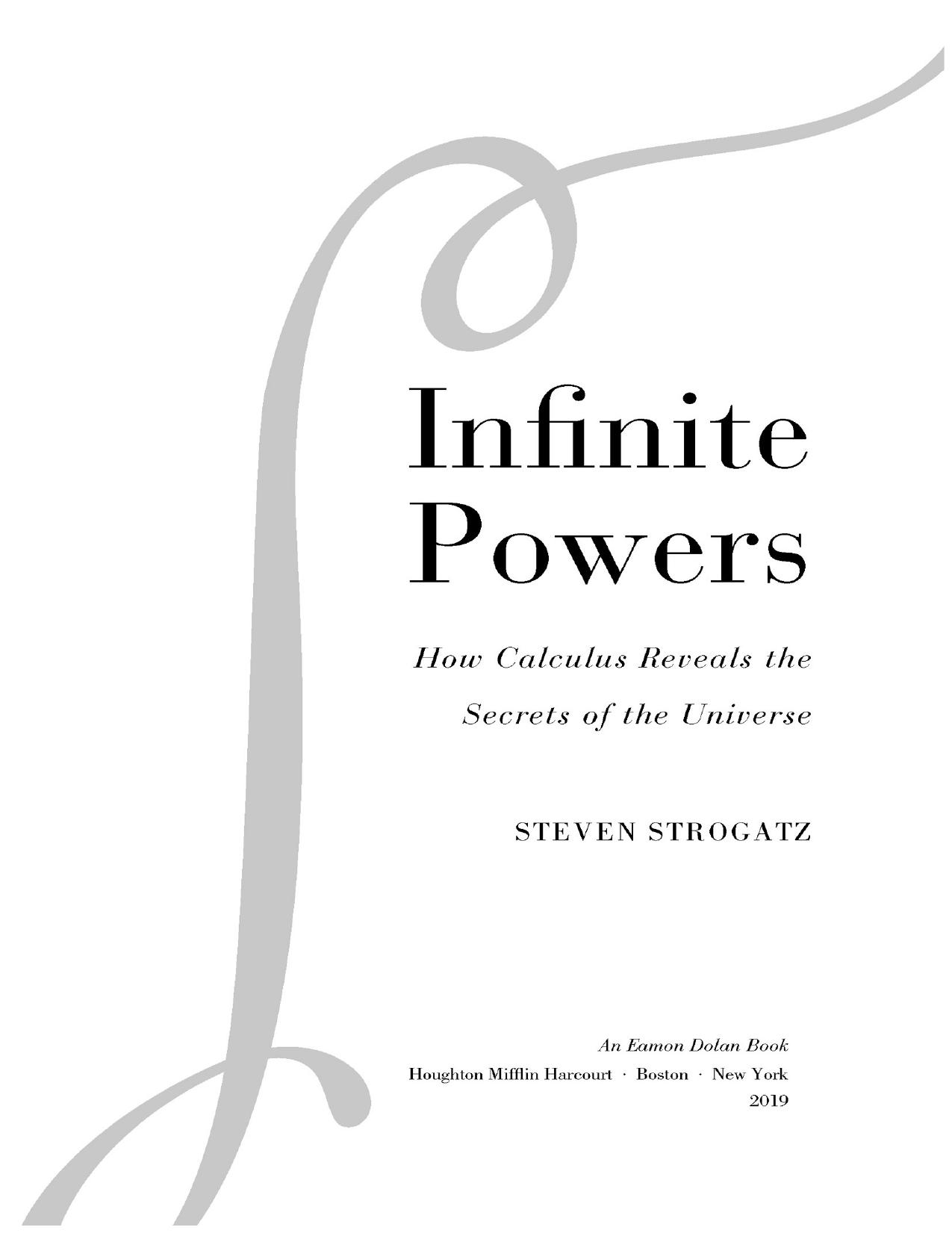Infinite Powers: How Calculus Reveals the Secrets of the Universe by Steven Strogatz

Author:Steven Strogatz [Strogatz, Steven]
Language: eng
Format: azw3, pdf
Publisher: HMH Books
Published: 2019-04-01T16:00:00+00:00
The Holy Grail of Integral Calculus
As I’ve tried to make clear, the fundamental theorem doesn’t fully solve the area problem. It provides information about the rate at which the area changes, but we still need to infer the area itself.
In terms of symbols, the fundamental theorem tells us that dA/dx = y, where y(x) is our given function. We’re still left with the chore of finding an A(x) that satisfies this equation. Wait a minute—this means we’re suddenly faced with the backward problem again! It’s a remarkable turn of events. We were trying to solve the area problem, central problem number 3 on our list in chapter 6, and suddenly we’re being confronted by the backward problem, central problem number 2 on the list. I’m calling it the backward problem because, as the diagram above shows, finding A from y means going upstream against the arrow, going backward against the derivative. In this setting the children’s game might go something like this: “I’m thinking of an area function A(x) whose derivative is 12x + x10 − sin x. What function am I thinking of?”
Developing methods to solve the backward problem, not just for 12x + x10 − sin x but for any curve y(x), became the holy grail of calculus. More precisely, it became the holy grail of integral calculus. Solving the backward problem would allow the area problem to be solved once and for all. Given any curve y(x), we’d know the area A(x) underneath it. By solving the backward problem, we’d also solve the area problem. This is what I meant about those two problems being separated-at-birth twins and two sides of the same coin.
A solution to the backward problem would also have much larger implications, for the following reason: An area is, from an Archimedean standpoint, an infinite sum of infinitesimal rectangular strips. As such, an area is an integral. It’s the integrated collection of all the pieces put back together, an accumulation of infinitesimal change. And just as derivatives are more important than slopes, integrals are more important than areas. Areas are crucial to geometry; integrals are crucial to everything, as we’ll see in the chapters ahead.
One way to approach the difficult backward problem is to ignore it. Shunt it aside. Replace it with the easier forward problem (given A, compute its rate of change dA/dx; by the fundamental theorem, we know that this must equal the y we’re seeking). This forward problem is much easier because we know where to start. We can start with a known area function A(x) and then crank out its rate of change by applying standard formulas for derivatives. The resulting rate of change dA/dx then must play the role of the partner function y; that’s what the fundamental theorem assures us: dA/dx = y. Having done all that, we now have a pair of partner functions, A(x) and y(x), which represent an area function and its associated curve. The hope is that if we are lucky enough to stumble
Download
Infinite Powers: How Calculus Reveals the Secrets of the Universe by Steven Strogatz.pdf
This site does not store any files on its server. We only index and link to content provided by other sites. Please contact the content providers to delete copyright contents if any and email us, we'll remove relevant links or contents immediately.
| Algebra | Calculus |
| Combinatorics | Discrete Mathematics |
| Finite Mathematics | Fractals |
| Functional Analysis | Group Theory |
| Logic | Number Theory |
| Set Theory |
Modelling of Convective Heat and Mass Transfer in Rotating Flows by Igor V. Shevchuk(6207)
Weapons of Math Destruction by Cathy O'Neil(5779)
Factfulness: Ten Reasons We're Wrong About the World – and Why Things Are Better Than You Think by Hans Rosling(4455)
Descartes' Error by Antonio Damasio(3139)
A Mind For Numbers: How to Excel at Math and Science (Even If You Flunked Algebra) by Barbara Oakley(3080)
Factfulness_Ten Reasons We're Wrong About the World_and Why Things Are Better Than You Think by Hans Rosling(3025)
TCP IP by Todd Lammle(2983)
Applied Predictive Modeling by Max Kuhn & Kjell Johnson(2860)
Fooled by Randomness: The Hidden Role of Chance in Life and in the Markets by Nassim Nicholas Taleb(2835)
The Tyranny of Metrics by Jerry Z. Muller(2819)
The Book of Numbers by Peter Bentley(2744)
The Great Unknown by Marcus du Sautoy(2517)
Once Upon an Algorithm by Martin Erwig(2457)
Easy Algebra Step-by-Step by Sandra Luna McCune(2435)
Lady Luck by Kristen Ashley(2386)
Practical Guide To Principal Component Methods in R (Multivariate Analysis Book 2) by Alboukadel Kassambara(2359)
Police Exams Prep 2018-2019 by Kaplan Test Prep(2334)
All Things Reconsidered by Bill Thompson III(2242)
Linear Time-Invariant Systems, Behaviors and Modules by Ulrich Oberst & Martin Scheicher & Ingrid Scheicher(2210)
